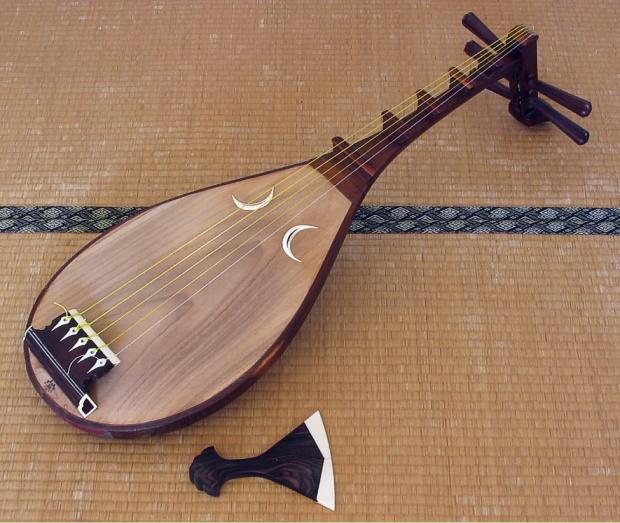Japanese instruments have long been revered for their unique sounds and cultural significance. These instruments not only reflect the rich history of Japan but also showcase the artistry and craftsmanship that have been passed down through generations. From the haunting melodies of the shamisen to the tranquil tones of the koto, each instrument carries its own story and place within Japanese society.
As we delve deeper into the realm of Japanese instruments, it becomes evident that they serve various purposes, from traditional performances to contemporary music. Many of these instruments are deeply rooted in the cultural and spiritual practices of Japan, making them integral to festivals, ceremonies, and artistic expressions. Through the exploration of these instruments, we can gain a better understanding of Japan's heritage and the role of music in its society.
In this article, we will examine some of the most prominent Japanese instruments, their historical contexts, and their significance in both traditional and modern settings. We will also address common questions about these instruments, including their construction, playing techniques, and the cultural narratives they embody.
What Are the Most Popular Japanese Instruments?
Japanese music features a wide variety of instruments, each contributing to the distinct sound of traditional Japanese music. Here are some of the most popular instruments:
- Koto: A stringed instrument that resembles a zither, played by plucking the strings.
- Shamisen: A three-stringed lute with a unique sound, often used in storytelling and theatrical performances.
- Shakuhachi: A bamboo flute known for its breathy and meditative tones.
- Taiko: A traditional Japanese drum that produces powerful and rhythmic beats, often used in festivals.
- Nohkan: A transverse flute used in Noh theater, characterized by its high-pitched sound.
How Are Japanese Instruments Made?
The craftsmanship involved in creating Japanese instruments is both intricate and time-consuming. Artisans often use traditional methods passed down through generations to ensure that the instruments maintain their cultural significance. For example:
- Koto: Typically made from wood, the koto requires careful selection of the materials to produce the desired sound quality.
- Shamisen: The body is often made from a combination of wood and animal skin, with the strings crafted from silk or nylon.
- Shakuhachi: Bamboo is harvested and treated to create a flute that resonates beautifully when played.
What Role Do Japanese Instruments Play in Cultural Traditions?
Japanese instruments are integral to various cultural traditions and rituals. They are often used in:
- Festivals: Instruments like taiko drums bring energy and excitement to local celebrations.
- Tea Ceremonies: The shakuhachi's soothing sounds complement the tranquil nature of tea rituals.
- Theater: Instruments such as the shamisen provide accompaniment to traditional performances like Kabuki and Bunraku.
Who Are the Famous Japanese Instrument Players?
Several musicians have gained prominence through their mastery of Japanese instruments. One notable figure is:
| Name | Instrument | Genre | Notable Achievements |
|---|---|---|---|
| Yoshida Brothers | Shamisen | Contemporary | Fusion of traditional and modern music, international tours |
How Has Technology Influenced Japanese Instruments?
In recent years, technology has played a significant role in the evolution of Japanese instruments. Musicians are now blending traditional sounds with modern genres such as pop and rock. This fusion has led to:
- Digital Instruments: Electronic versions of traditional instruments allow for new sounds and experimentation.
- Collaborations: Artists are working together across genres, incorporating instruments like the koto and shamisen into contemporary music.
What Are the Benefits of Learning Japanese Instruments?
Learning to play Japanese instruments offers numerous benefits, including:
- Cultural Appreciation: Understanding the history and significance of these instruments deepens one's connection to Japanese culture.
- Improved Focus: Playing an instrument enhances concentration and discipline.
- Emotional Expression: Music serves as a powerful outlet for expressing feelings and emotions.
What Is the Future of Japanese Instruments?
The future of Japanese instruments appears bright as more musicians embrace their cultural heritage while also seeking innovative ways to adapt to contemporary music trends. With ongoing interest in traditional arts and a growing global audience, these instruments will continue to evolve and inspire future generations.
How Can One Get Started with Learning Japanese Instruments?
If you're interested in learning to play a Japanese instrument, consider the following steps:
- Research: Explore different instruments to find one that resonates with you.
- Find a Teacher: Look for local instructors or online courses that specialize in Japanese music.
- Practice Regularly: Consistency is key to mastering any instrument.
In conclusion, Japanese instruments are not just tools for creating music; they embody the spirit and history of Japan. As you explore their sounds and stories, you'll discover a deeper appreciation for the artistry and tradition that continues to shape Japan's musical landscape.


